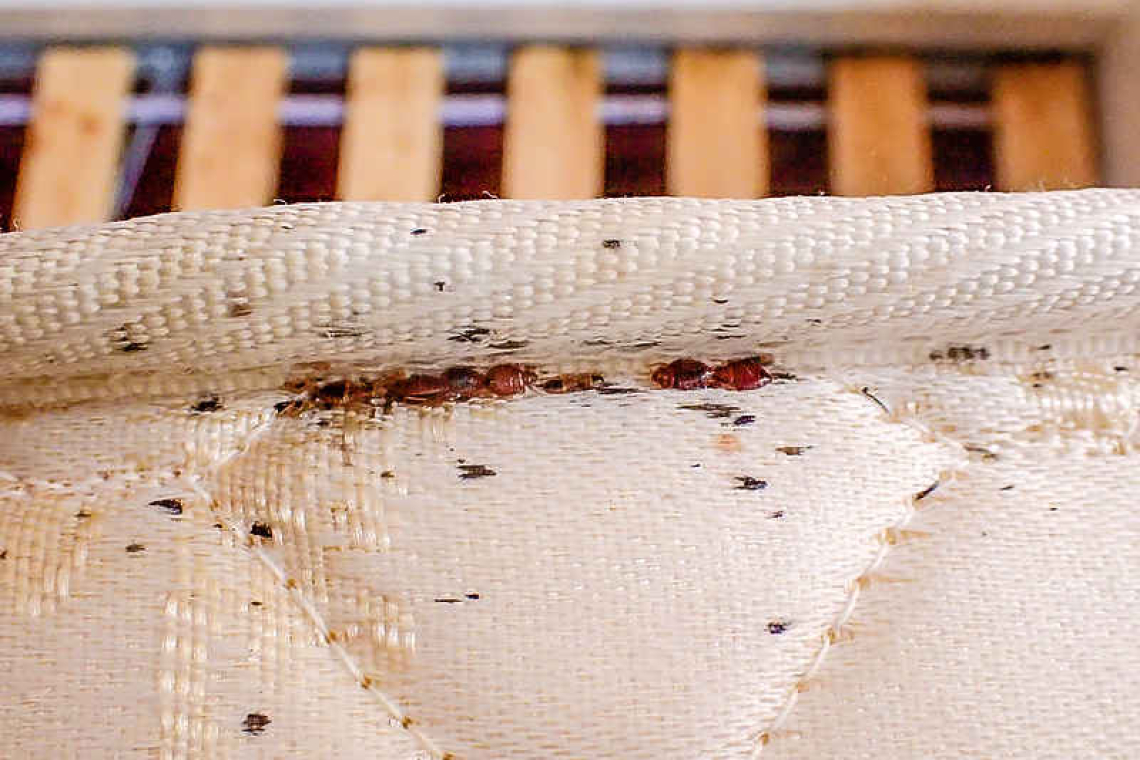By Dr. Colin Michie FRCPCH University of Central Lancashire.
Insects that feed on human blood may be spreading in many cities. Bed bug concerns are rising because of travel; bugs move so easily with us in clothes and luggage.
It is uncomfortable to discuss these critters – thinking of them may make you itch and shudder! They have always been a human parasite. Their formal name is Cimex, Latin for “bug”. In the US, CBS declared 2010 to be the Year of the Bed Bug, but this may have been premature as concerns about infestations have increased since. This month Conde Nast Traveller headed an article: “Can I travel to Paris during the bedbug infestation?” There were apparently increased sightings of these little brutes, les punaises or bedwantsen, just before Paris Fashion Week.
Bugs typically live in one’s bed, they detect the carbon dioxide we breathe out, as well as our body heat and odours. They dislike light and enjoy close contact with other bed bugs, so they survive well in the crevices of a bed frame or chair. Bugs tend to feed for 5-10 minutes every three to seven days. They need blood to grow and multiply, so female bugs are particularly voracious. Their eggs are difficult to see as whitish oval objects about 2mm in length. Adults are flat-bodied and about 4mm long: they are darker if they have fed recently. They “scurry”, but cannot fly, 6-8m to find the next warm human host down the corridor. Bed bugs should not infest your pets, although they do infest chickens. If they cannot find a meal, bugs can hunker down and survive several months without feeding. They survive outdoors, hiding in vehicle seats and garden sheds.
Some spiders, mites, ants, centipedes and cockroaches happily eat bed bugs, but they cannot manage the numbers of chinches in the average domestic infestation. Pet cockroaches have been recommended as useful predators with their helpfully nocturnal habits. Even though they are long-lived and can be trained to recognise their owners, these are among the least appealing animals to train!
Bites from bed bugs are typically painless and are often found in a group or arc, nicknamed “breakfast, lunch, dinner”. The bites cause an itching reaction in most of us, a response to bug salivary proteins. These should heal without treatment; neem oil is recommended by some to reduce the allergic reaction and itch. Infestations will lead to poor sleep, possibly anxiety and emotional upset too.
On the up side, unlike mosquitoes, ticks or body lice, bed bugs are unlikely to spread diseases. This includes the viruses that cause hepatitis and retroviral infections. Bugs release a smell after feeding that is said to be musty or sweet and to resemble rotten wood. This scent is caused by histamine in bug poop. Many can detect this smell; dogs certainly can: canine trackers are used by pest controllers. Another sign of bugs are their faeces: small black dots widely spread around their feeding places.
Bug populations can double in two to three weeks in your bed: interventions need to be speedy if these are seen or smelt. A useful first step is to ensure family members can identify a bed bug, whether encountered at home, school, work, or public transport. Bug hitchhiking must be prevented. Deterrents include agents such as DEET, neem oil and reporting to relevant authorities. A hot wash (140 degrees Fahrenheit for 30 minutes), or a hot drying treatment of the same length of time removes eggs and bugs from your clothing, bedding, bags or other fabrics.
Several biologic agents kill bugs. Diatomaceous earth, a fine inert dust prepared from the fossil remains of plankton, is harmless and stain-free: these tiny particles of bio-silicate will damage bed bug body armour and respiration, drying out the pests. Gregarious bed bugs carry this lethal dust back to their nest, where it kills other bugs. Diatomaceous earth has a great advantage because it persists: residues continue to be active around treated areas. Neem oil is often found effective at killing bugs; mint or lavender oils may be tried too.
Biological methods are often used together with pesticides to increase their effectiveness and reduce environmental impacts. Pyrethroids and neonicotinoids are frequently used by pest controllers. Steam too, as heat kills bugs. Bugs have become resistant to common pesticides, leaving householders dependent on pest controllers employing combination or staged techniques. Controls can be expensive, but eradication is possible – dormitories have been cleared using just steam and diatomaceous earth.
Vigilance is a useful tactic with these pests, particularly in areas popular with tourists. Putting embarrassment to one side, a community-based, civic duty approach is always more effective, given the adventurous travel plans sometimes adopted by bed bugs. Here’s hoping your dreams are not full of six-legged boogiebeasts!
Useful resources:
https://www.epa.gov/bedbugs/introduction-bed-bugs#
https://www.nhs.uk/conditions/bedbugs/
Dr. Colin Michie is currently the Associate Dean for Research and Knowledge Exchange at the School of Medicine in the University of Central Lancashire. He specializes in paediatrics, nutrition, and immunology. Michie has worked in the UK, southern Africa and Gaza as a paediatrician and educator and was the associate Academic Dean for the American University of the Caribbean Medical School in Sint Maarten a few years ago.







